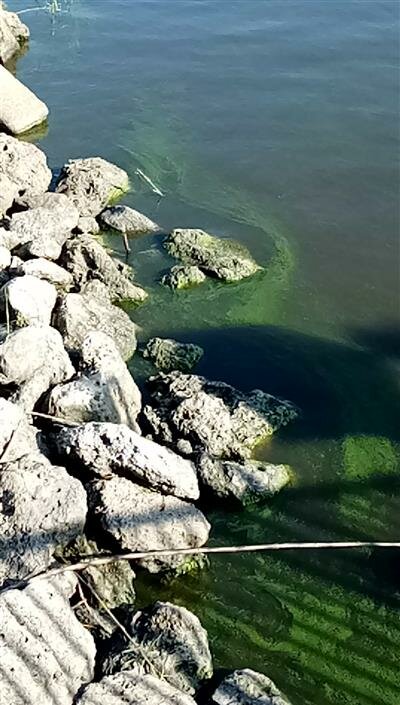Several water samples from Lake Okeechobee last week had toxin levels above the standard the Environmental Protection Agency (EPA) considers safe ...
Join our family of readers for as little as $5 per month and support local, unbiased journalism.
Already have an account? Log in to continue. Otherwise, follow the link below to join.
Please log in to continue |

Lake Okeechobee water samples taken at Pahokee and Canal Point last week had toxin levels above the standard the Environmental Protection Agency (EPA) considers safe for human recreation contact (swimming).
The EPA considers microcystin toxin levels below 8.0 parts per billion (ppb) to be safe for recreational contact and levels below 1.0 ppb safe for drinking water.
The Florida Department of Environmental Protection (FDEP) collects water samples from areas in which an algal bloom has been reported. In addition, the South Florida Water Management District (SFWMD) collects water samples from 32 sites on Lake Okeechobee every two weeks during the wet season.
On June 12 and June 14, SFWMD staff found toxins at five sites on the Lake Okeechobee Waterway. Two sites -- Canal Point and Pahokee -- had toxin levels above the 8.0 ppb level set by the EPA for recreational contact. The highest toxin levels were at S271 (the Canal Point water control structure), with 53 ppb.
Cyanobacteria were also found in the St. Lucie Canal (C-44 canal). No lake water has been released to the St. Lucie canal since April.
Cyanobacteria (commonly called blue-green algae) and algae are part of the Lake Okeechobee Waterway’s natural ecosystem. Tests are required to determine which species of algae and/or cyanobacteria are present in a water sample. Tests are also required to determine if any toxins are present. Of the 28 species of cyanobacteria documented by the U.S. Geological Survey in the Lake Okeechobee Waterway, about 25% are capable of producing toxins. Cyanobacteria capable of producing toxins do not always do so.
The Lake Okeechobee Waterway includes the Caloosahatchee River, Lake Okeechobee, the St. Lucie Canal and the St. Lucie River.
Cyanobacteria were detected at:
• C43 Canal at S77 (Julian Keen Lock at Moore Haven, upstream): Microcystis aeruginosa; trace level (0.34 ppb) microcystins detected.
• Lake Okeechobee - S308C (Port Mayaca lock, lakeside): Microcystis aeruginosa; trace level (0.30 ppb) microcystins detected.
• C44 canal - S308C (St. Lucie Canal canal side): Microcystis aeruginosa; no cyanotoxins detected.
• C43 Canal - S78 (Caloosahathcee River, Ortona Lock, upstream): Microcystis aeruginosa; no cyanotoxins detected.
• C43 canal - S79 (Caloosahatchee River, Franklin Lock, upstream): Microcystis aeruginosa; no cyanotoxins detected.
• Lake Okeechobee - S352 (Pahokee, lakeside) collected June 12: Microcystis aeruginosa; 32 ppb microcystins detected.
• Lake Okeechobee - S352 (Pahokee, lakeside) collected June 14: Microcystis aeruginosa; 27 ppb microcystins detected.
• Lake Okeechobee - S271 (Canal Point, lakeside): Microcystis aeruginosa; 52 ppb microcystins detected.
• Lake Okeechobee - S354 (South Bay, canal side): Microcystis aeruginosa; trace level (0.72 ppb) microcystins detected.
The Florida Department of Health advises:
• Do not swim in or around areas where visible algae are present.
• Do not allow pets or livestock near water where visible algae are present.
• If you come into contact with algae, wash it off with soap and water.
• Fish tested from water with blue-green algae show that cyanotoxins do not significantly accumulate in the edible parts—muscle or fillet—of fish, but can in other organs. Prior to consuming, rinse fish fillets with tap or bottled water, throw out the guts, and cook the fish well. Do not eat shellfish in waters with blue-green algae blooms.
If you come into contact with blue-green algae or think that blue-green algae has made you sick, contact or visit a doctor or call the Florida Poison Information Center at 1-800-222-1222.
To report a bloom to FDEP, call the toll-free hotline at 855-305-3903 or report online at floridadep.gov/AlgalBloom. To report fish kills, contact the Florida Fish and Wildlife Research Institute at 1-800-636-0511.